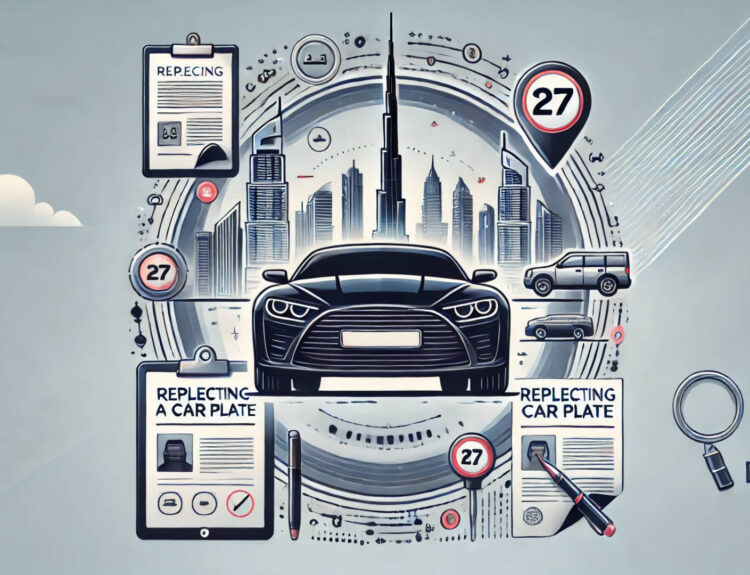Navigating UAE Roads: A Comprehensive Guide to Traffic Signs and Road Markings
Traveling through the United Arab Emirates (UAE) can be a seamless experience with a solid grasp of its traffic regulations, particularly the signs and road markings that foster safety and efficiency. Whether you are a newcomer, a tourist, or gearing up for your driving examination, this thorough guide will enhance your understanding of UAE traffic signs, their meanings, and their importance.
The Significance of Traffic Signs in the UAE
In the UAE, traffic signs serve as more than mere visual cues; they are essential legal indicators that inform, guide, and alert all road users. From speed limits to lane guidance and safety warnings, these signs are crucial for ensuring safer journeys for motorists, pedestrians, and cyclists alike. The UAE has adopted internationally recognized standards for traffic signage, providing bilingual displays (Arabic and English) with symbols regulated by key authorities like the Roads and Transport Authority (RTA) and Abu Dhabi’s Integrated Transport Centre (ITC).
Key Categories of UAE Traffic Signs
-
Mandatory Traffic Signs
Mandatory signs enforce specific actions that drivers must comply with. Often circular with blue backgrounds, examples include:- Turn right only
- Ahead only
- Minimum speed limit (e.g., 60 km/h)
- Keep left or keep right
- Directional arrows on roundabouts
Disregarding these legally binding signs may lead to penalties. Understanding mandatory speed limits is crucial for promoting road safety in the UAE.
-
Control Signs
Control signs dictate traffic flow and right-of-way rules at intersections and pedestrian crossings, including:- Give way
- Stop
- No entry
- Directions for continuing straight or turning
Violating a stop sign can result in serious fines and black points, emphasizing the need for compliance with these regulations.
-
Parking Control Signs
These signs indicate parking regulations and can specify appropriate areas for different types of vehicles:- Parking allowed
- No parking or stopping
- Paid parking (with specified hours)
- Reserved spaces for taxis, buses, and loading zones
Notably, each emirate, including Sharjah, may have unique parking regulations. Familiarizing yourself with local rules is essential.
-
Freeway Control Signs
These indicators mark controlled freeway routes, guiding drivers to entry and exit points on expressways. -
Prohibitory Signs
Indicating forbidden actions, these signs are typically framed with red borders:- No U-turns
- No overtaking
- No heavy vehicles
- Maximum height limits
Ignoring prohibitory signs can lead to severe fines.
-
Trailblazing Guide Signs
These signs help drivers navigate to key destinations and landmarks:- Airport signage
- Directions to city centers
- Dubai route numbers
-
Guide Signs
Offering directions and route numbers, these signs are color-coded for clarity:- Blue for national routes
- Green for local Dubai routes
- Brown for tourist attractions
-
Advance Guide Signs
These signs provide early warnings about upcoming exits or lane changes to enhance smooth driving conditions. -
Exit Direction Signs
Positioned near highway exits, these guide signs prepare drivers for lane changes well in advance, ensuring a safer transition. - Warning Signs
Warning signs alert drivers to potential hazards or road changes. They are usually triangular and include:- Advanced warning signs for curves and junctions
- Diagrammatic signs for complex road conditions
- Hazard markers indicating obstacles or road narrowing
Understanding UAE Road Markings
In addition to traffic signs, road markings are vital for guiding drivers, particularly where signage may be absent. Familiarity with these markings can enhance driving safety and is essential for those preparing for driving tests.
-
Regulatory Road Markings
These markings denote rules that must be followed:- No Passing Line
- Stop Line
- Give Way Line
- Pedestrian Crossing
- Box Junction marking
-
Warning Road Markings
These markings signal drivers about possible hazards:- Rumble strips
- Speed bump markers
- Tram crossing markings
- Guidance Road Markings
These assist drivers in positioning their vehicles correctly on the road:- Broken lines to denote lane changes
- Solid lines indicating no overtaking
- Lane arrows for proper navigation at intersections
Conclusion: Prioritizing Safety on UAE Roads
Traffic signs and road markings are imperative for maintaining order, minimizing accidents, and managing the roadways efficiently in the UAE. The signage system is designed to be user-friendly and internationally recognized, aiding millions of motorists daily.
Whether you’re an experienced driver or just starting, make it a habit to routinely review these signs and markings. By doing so, you contribute to road safety and compliance. For specifics on common traffic violations and penalties across the UAE, particularly in Abu Dhabi, consult thorough resources to stay informed.
Frequently Asked Questions
-
What are the consequences of disregarding traffic signs in the UAE?
Ignoring traffic signs, like failing to stop at a stop sign, can accrue fines and points on your driving record. For example, a stop sign violation in Abu Dhabi can incur a fine of AED 500. -
How are speed limits adjusted during severe weather?
In adverse conditions, dynamic speed limits are displayed via smart gantries and fixed signage, advising drivers to reduce speeds to 80 km/h. -
What unique parking signs should I note in Sharjah?
Sharjah provides designated parking spaces delineated with specific curb markings and signage that outline usage and associated fees. Adherence to these instructions is essential to avoid fines. -
What do Darb toll gate signs symbolize in Abu Dhabi?
These signs indicate automated toll collection systems intended to alleviate traffic congestion. Familiarity with them enables compliance and avoids unexpected fines. - How do speed limits enhance road safety in the UAE?
Established to prevent accidents and safeguard pedestrians, speed limits contribute significantly to orderly traffic flow. Compliance is essential for the safety of all road users.
For more insights into the automotive landscape in the UAE, including car sales and driving tips, stay connected with UAE’s top automotive blogs.
Source:www.dubicars.com






